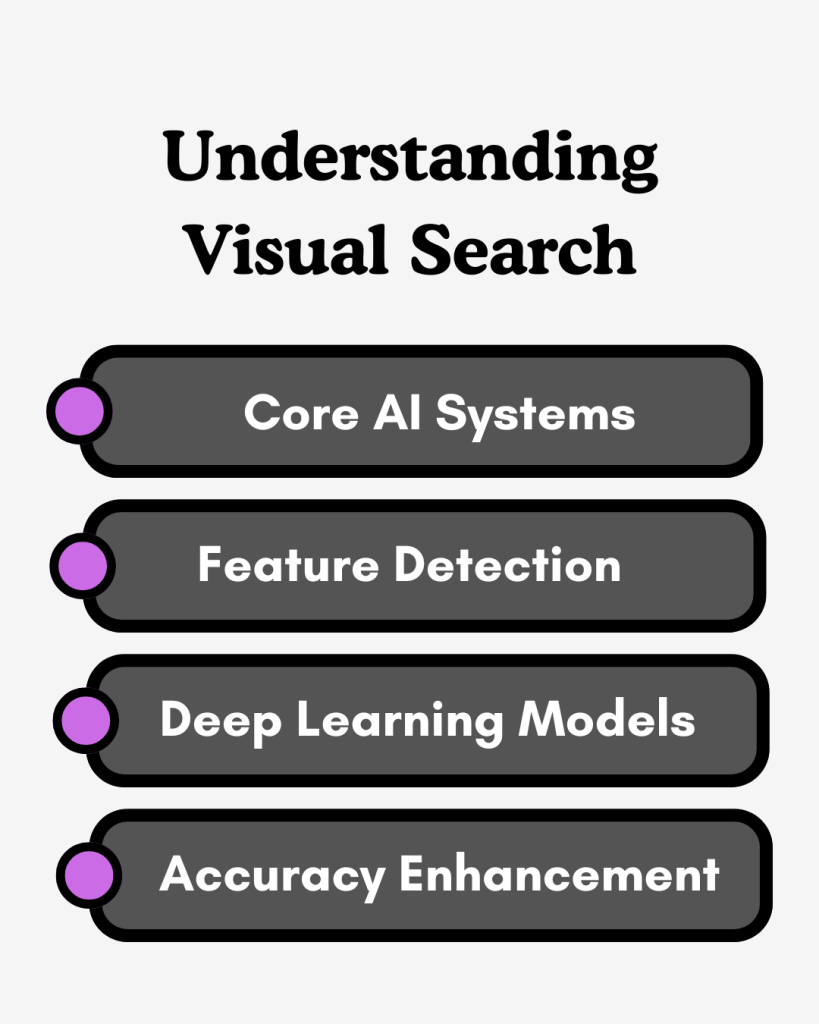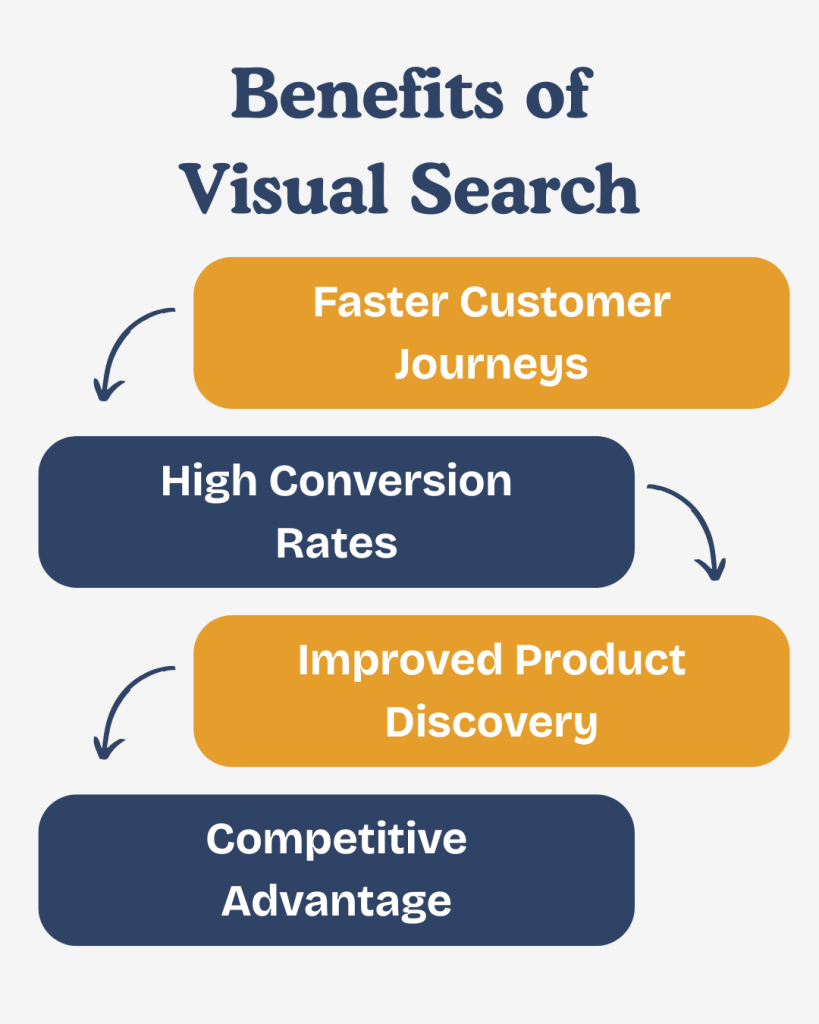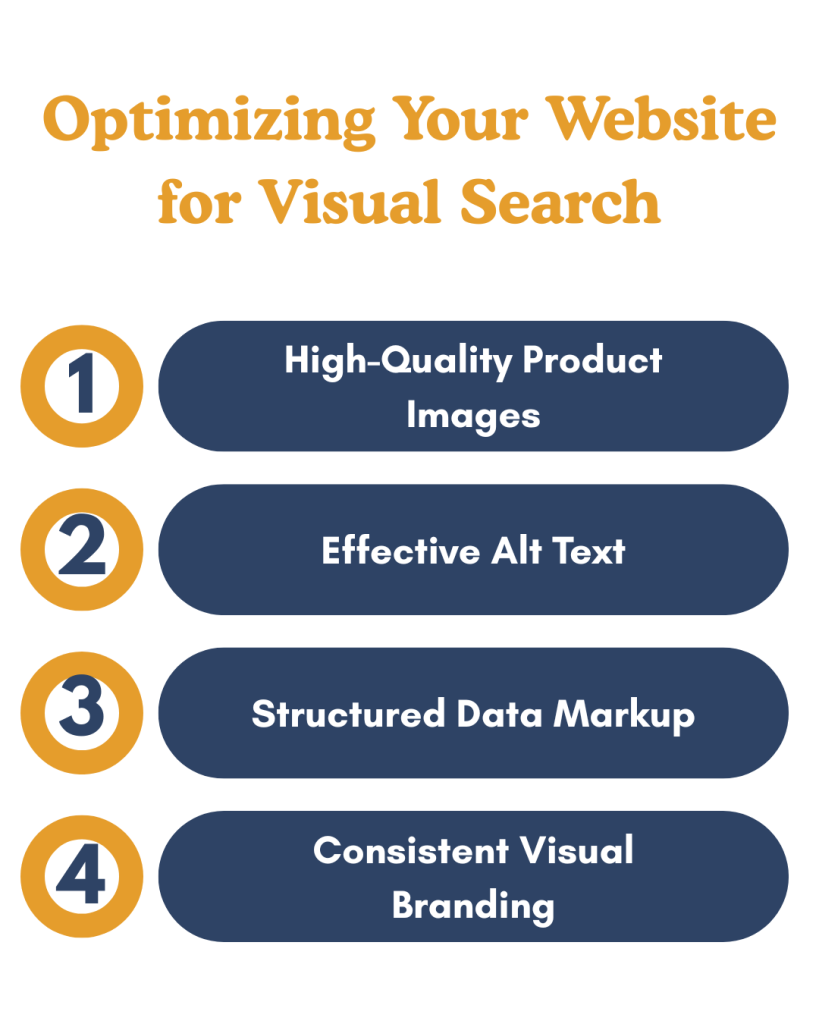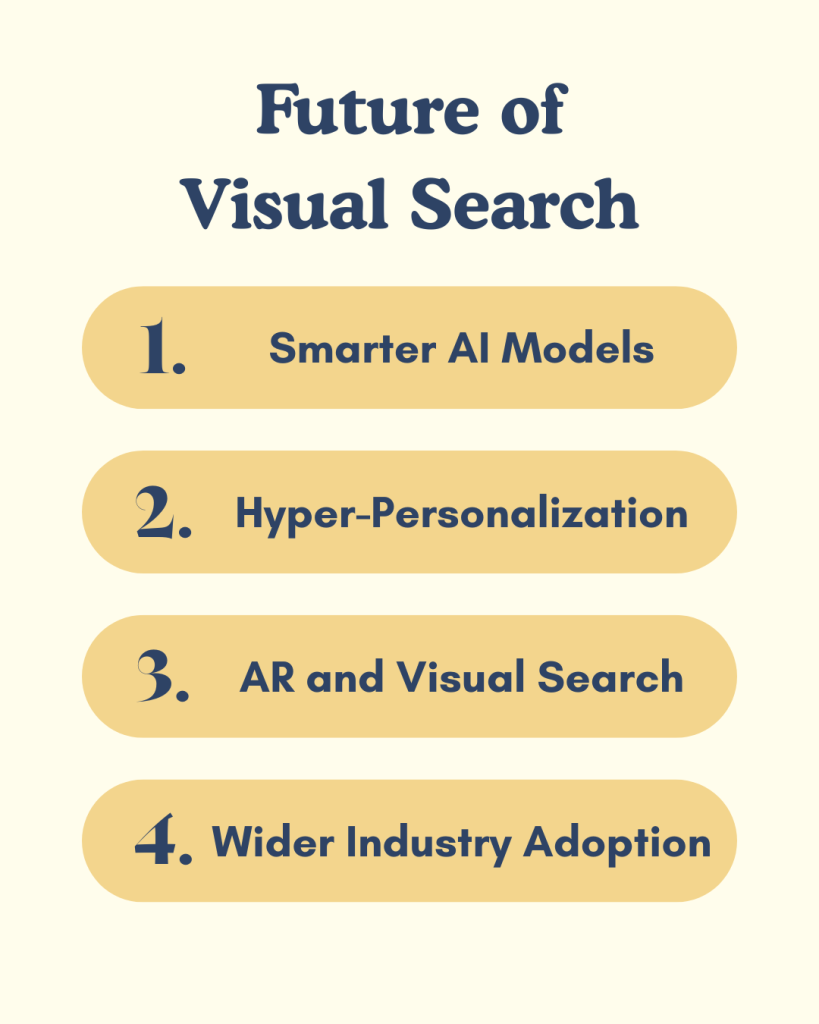Table of Contents
Introduction
Visual search is transforming the way we navigate the online landscape, shifting from the traditional method of typing in keywords to simply using images. With just one picture, shoppers can now discover similar products, recognize objects, and explore options instantly.
As AI and computer vision technology continue to advance at a rapid pace, visual search is becoming more precise, user-friendly, and seamlessly integrated into our daily platforms. From Google Lens to Pinterest Lens, users are now looking for quicker, more intuitive ways to shop and search.
For businesses in various sectors, visual search presents a unique chance to enhance product visibility, streamline customer journeys, and improve online experiences. Grasping how it functions and how to optimize for it lays the groundwork for better digital performance and increased conversions.
Understanding Visual Search

Visual search relies on a combination of cutting-edge AI technologies that work seamlessly behind the scenes.
- Core AI Systems: At the heart of visual search are AI, machine learning, and computer vision. These technologies work together to spot visual patterns and turn them into digital data that algorithms can easily interpret.
- Feature Detection: The models dissect an image into its essential components—colors, shapes, edges, and textures. This process of feature mapping enables the system to effectively match the uploaded image against millions of visuals stored in its database.
- Deep Learning Models: Neural networks are trained on vast datasets of images, which empowers them to identify objects with remarkable accuracy. As time goes on, these models enhance their capabilities through ongoing learning.
- Accuracy Enhancement: Platforms boost their accuracy by cross-referencing visual data with contextual information like tags, metadata, and user behavior. This approach helps to minimize mismatches and guarantees relevant search results.
These systems analyze images much like we do, picking up on shapes, patterns, textures, and context in the blink of an eye.
Major Visual Search Platforms
Visual search technology has really come into its own, becoming a game-changing feature thanks to platforms that seamlessly integrate AI with how we use technology every day.
Google Lens

Google Lens lets you explore the world around you just by pointing your camera or uploading a picture. It can identify objects, text, products, and locations with impressive accuracy, making it a really handy tool.
For businesses, this opens up more opportunities to show up in visual search results, especially when product images are optimized effectively. Thanks to Google’s vast data ecosystem, Lens usually provides quick and highly relevant matches.
Pinterest Lens

Pinterest Lens really taps into the visually stunning world of Pinterest, making it a fantastic tool for discovering lifestyle, fashion, and decor ideas. Users can easily search for inspiration or shop for products that match similar pins.
Brands really get a boost from Pinterest’s audience, which is driven by intent—these are people who are already in the mindset to buy or create. You’ll find that high-quality, eye-catching images tend to shine in this space.
Bing Visual Search

Bing Visual Search is all about powerful object recognition and a super-easy-to-use interface. It really shines with its breakdown search feature, allowing users to click on different parts of an image to dive into detailed results.
For businesses, Bing offers a less crowded space compared to Google, which means brands have a better chance of standing out in search results. Plus, its seamless integration with Microsoft’s ecosystem gives it an extra edge in reaching more users
E-commerce Visual Search Tools

These days, platforms like Amazon, Shopify, and other major retail apps are stepping up their game with built-in visual search tools designed specifically for product discovery. These smart systems can match user-uploaded photos with similar items in the blink of an eye.
For businesses leveraging these platforms, the payoff is huge: customers can find exactly what they’re looking for without having to type a single word, making their shopping experience much smoother.
Benefits of Visual Search

Visual search is rapidly becoming a key driver of growth for businesses as customers increasingly seek quicker and more intuitive ways to find products.
- Faster Customer Journeys: Visual search makes it a breeze for customers to find what they’re looking for. Instead of wrestling with keywords, they can just upload an image and get instant results.
- High Conversion Rates: When customers engage with visual search, they come with a clear purpose—often driven by something they desire or were inspired by. This naturally enhances the chances of conversion.
- Improved Product Discovery: Visual search opens up a world of possibilities for customers, allowing them to stumble upon products they might have missed with traditional keyword searches.
- Competitive Advantage: Brands that embrace visual search really shine in busy markets by providing a fresh, user-friendly shopping experience. It showcases their commitment to innovation and puts the customer first.
Companies that adopt this technology early on often enjoy enhanced visibility, greater engagement, and lasting customer loyalty.
Optimizing Your Website for Visual Search

To really harness the power of visual search, businesses should make sure their website and product content are primed for image recognition.
- High-Quality Product Images: When it comes to high-quality product images, having clear and crisp visuals is key. They help visual search tools accurately grasp shapes, textures, and colors.
- Effective Alt Text: Effective alt text is another important factor. It enhances image understanding by providing context for search engines. Using simple, descriptive tags makes your visuals more searchable and relevant.
- Structured Data Markup: Don’t forget about structured data markup! Adding schema helps search engines categorize and comprehend product details, which can significantly boost your visibility in both text and visual search results.
- Consistent Visual Branding: Lastly, maintaining consistent visual branding is crucial. Using uniform backgrounds, lighting, and styling makes it easier for algorithms to analyze your catalog.
This involves prioritizing clarity, consistency, and structure, allowing search engines to easily understand visuals and connect them with what users are searching for.
Future of Visual Search

Visual search is rapidly evolving, thanks to breakthroughs in AI and the growing demand from users for more intuitive ways to discover things.
- Smarter AI Models: AI technology is set to get even better at recognizing objects with impressive accuracy, even when dealing with low-quality or complicated images. This means fewer errors and a boost in trust.
- Hyper-Personalization: The systems of the future will customize results based on how users behave, their style preferences, and previous interactions. This will create shopping experiences that feel like they’ve been specially designed just for you.
- AR and Visual Search: Augmented reality will blend seamlessly with visual search, allowing users to identify and see products in real-world settings. This will make shopping a much more engaging and immersive experience.
- Wider Industry Adoption: Various industries—from travel to automotive—will start incorporating visual search into their digital platforms. This widespread adoption will make image-based discovery a normal part of everyday apps.
As technology gets smarter and more interconnected, businesses should prepare for visual search to transform how customers engage with products, content, and brand ecosystems.
Conclusion
Visual search is changing the game for how we find products, swapping out those lengthy keyword searches for quick, image-based results. It’s fast and precise, making online shopping feel much more natural and intuitive for today’s consumers.
For businesses, this transformation brings exciting opportunities for visibility, engagement, and sales. By optimizing their images and using the right tools, brands can connect with customers right at the moment inspiration strikes.
As AI keeps advancing, visual search is set to become even more powerful and widely used. Companies that jump on this trend now will find themselves leading the charge in the next big wave of digital commerce.
Deepak Wadhwani has over 20 years experience in software/wireless technologies. He has worked with Fortune 500 companies including Intuit, ESRI, Qualcomm, Sprint, Verizon, Vodafone, Nortel, Microsoft and Oracle in over 60 countries. Deepak has worked on Internet marketing projects in San Diego, Los Angeles, Orange Country, Denver, Nashville, Kansas City, New York, San Francisco and Huntsville. Deepak has been a founder of technology Startups for one of the first Cityguides, yellow pages online and web based enterprise solutions. He is an internet marketing and technology expert & co-founder for a San Diego Internet marketing company.



